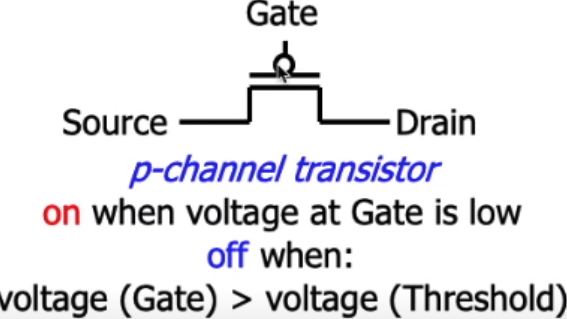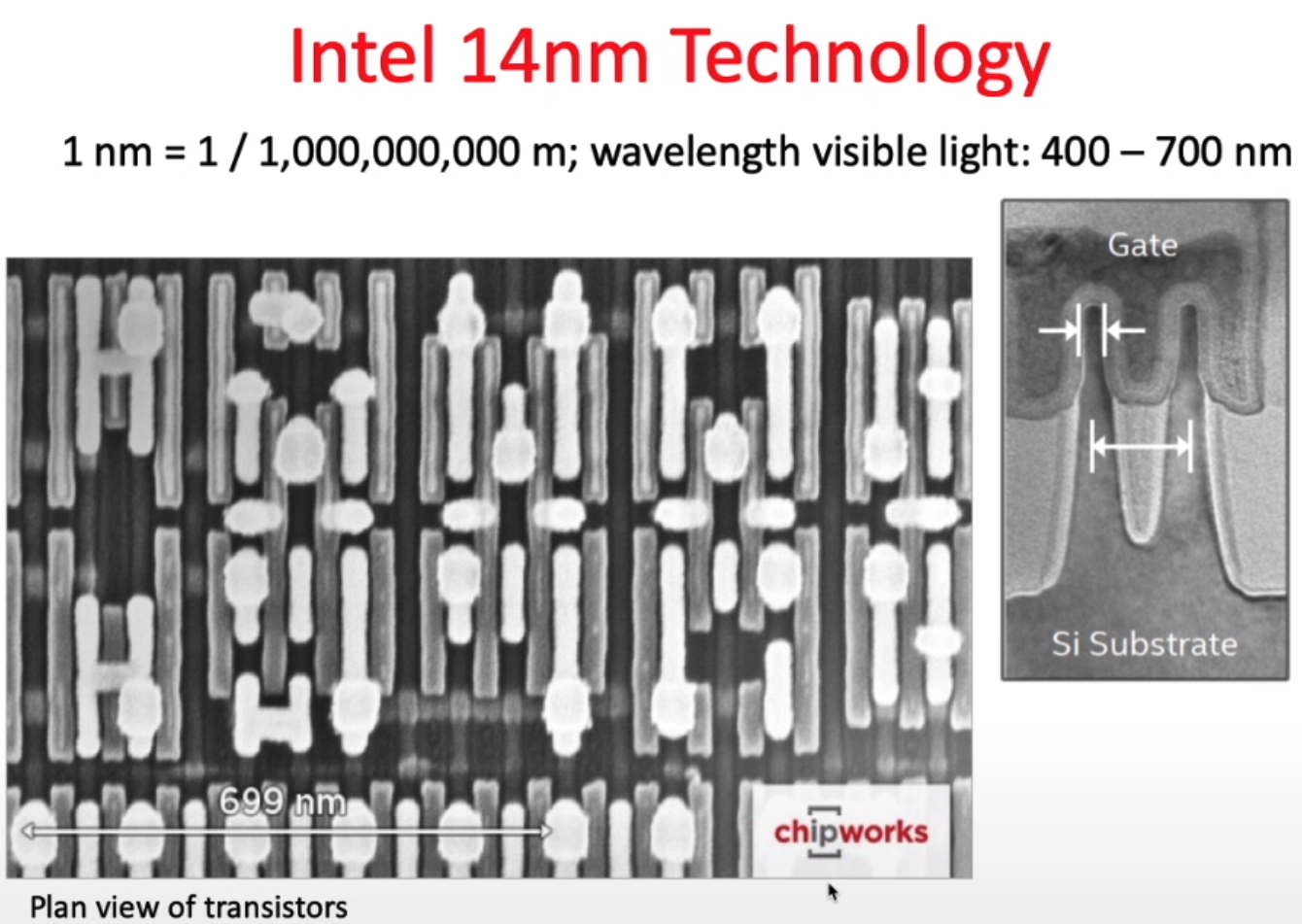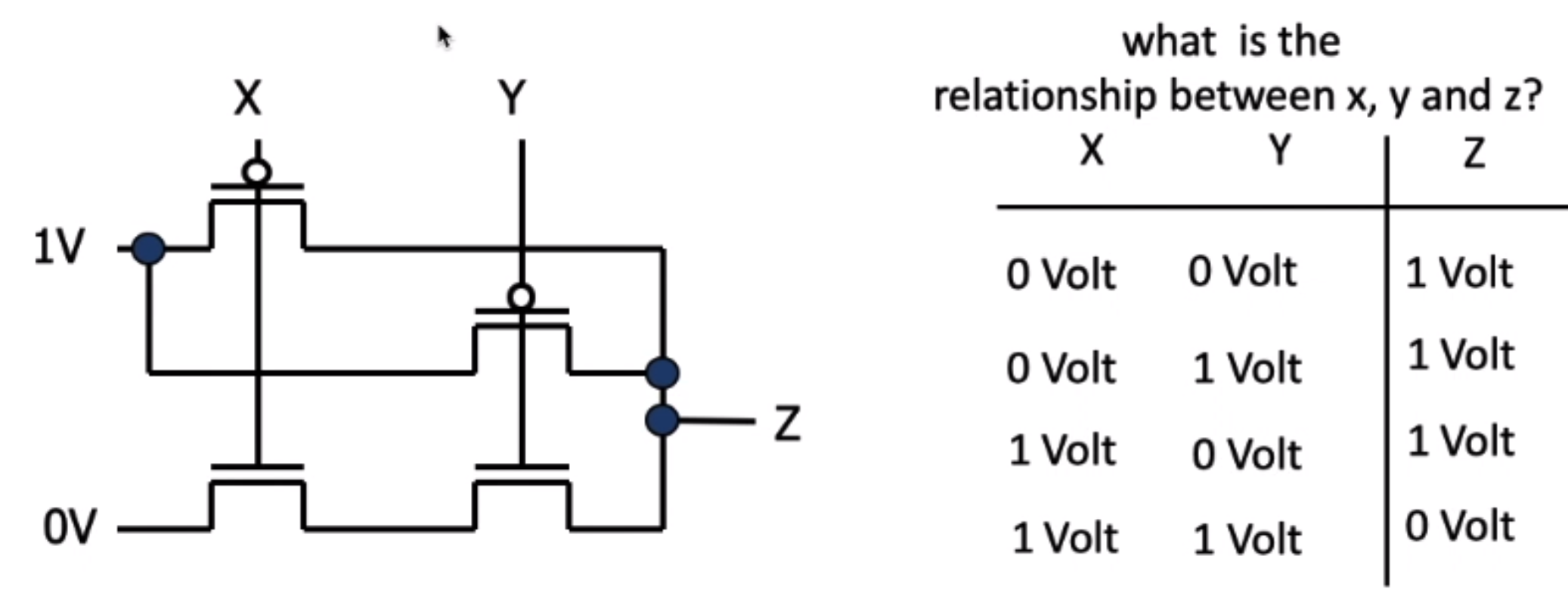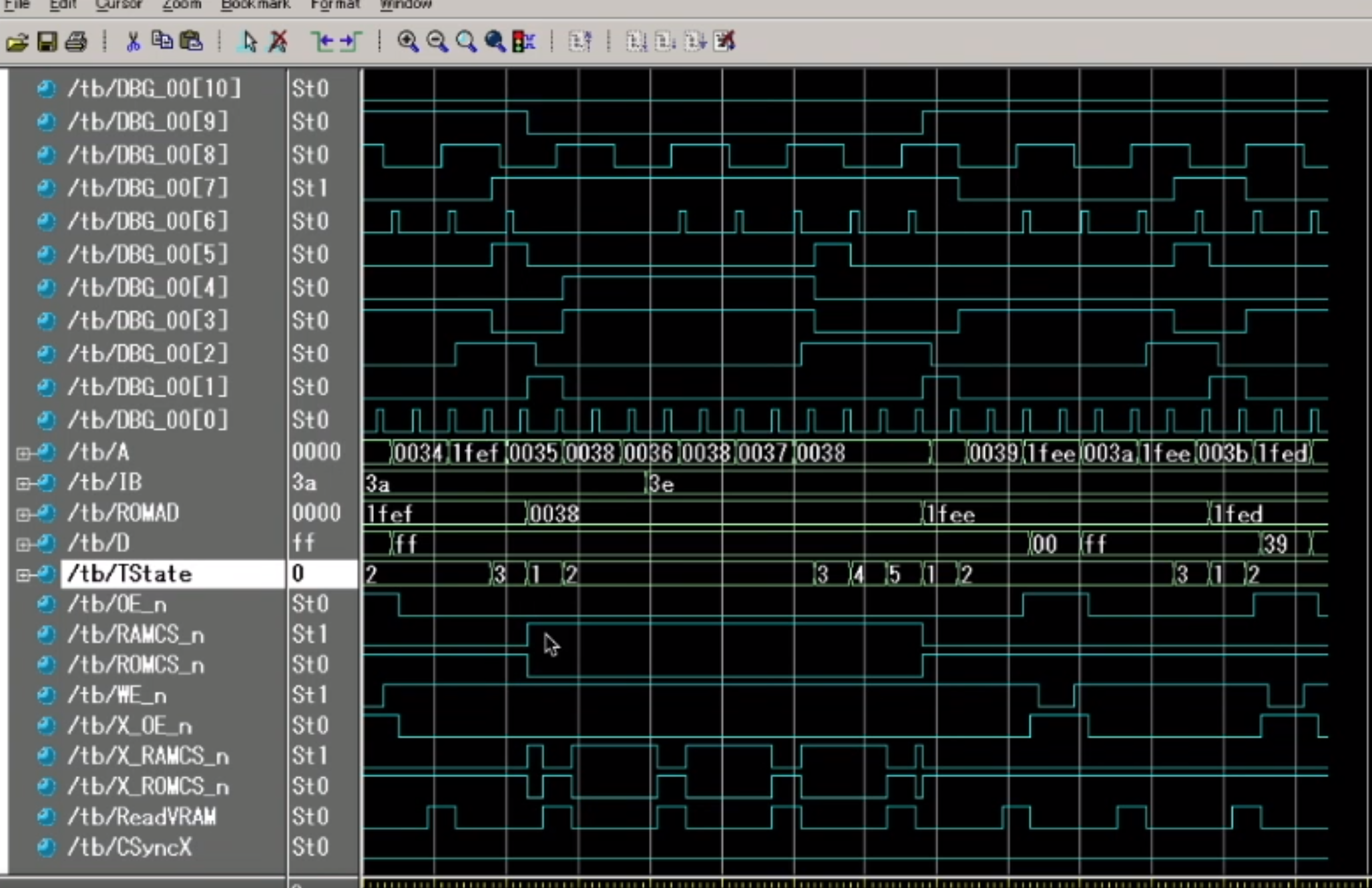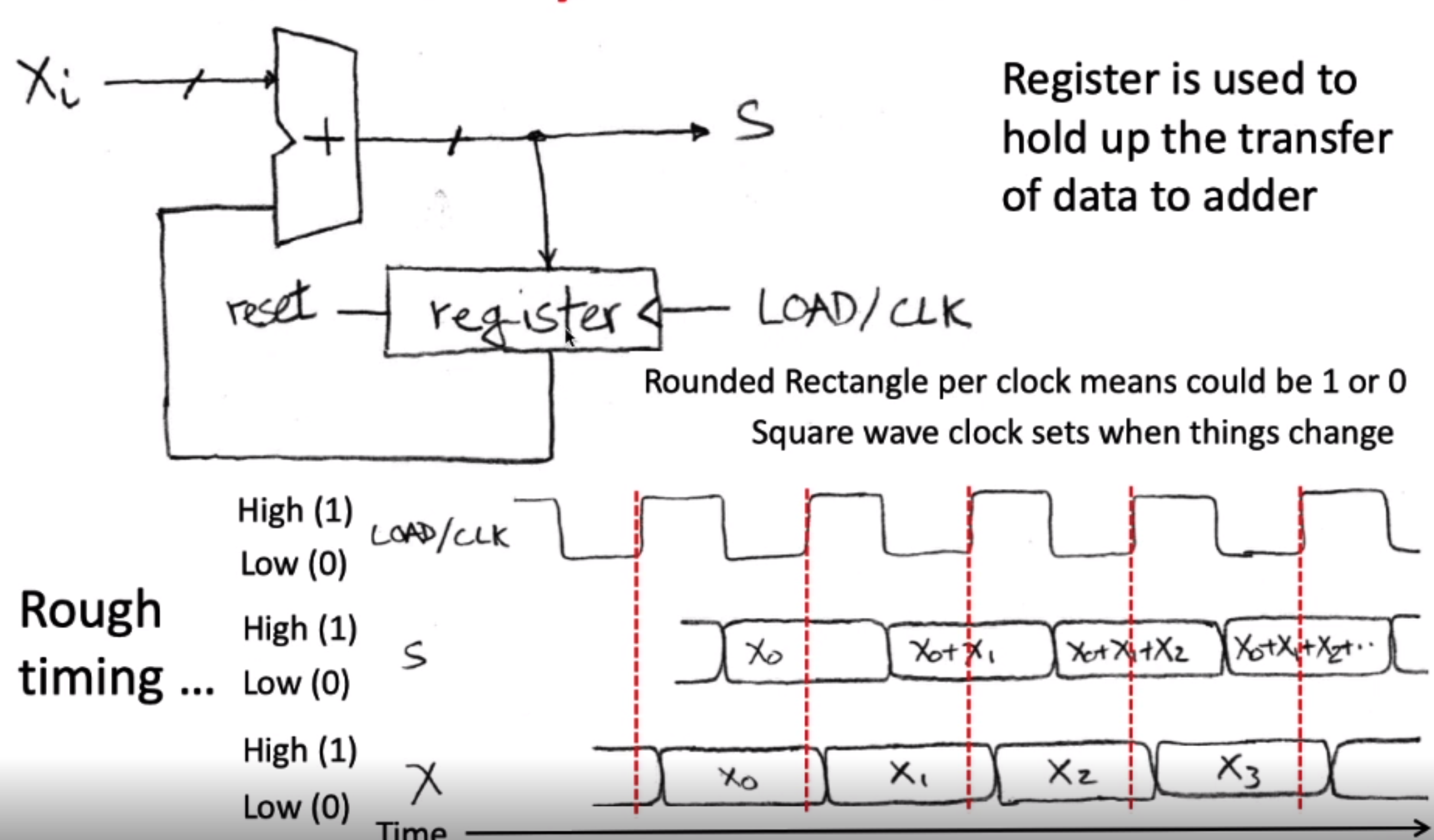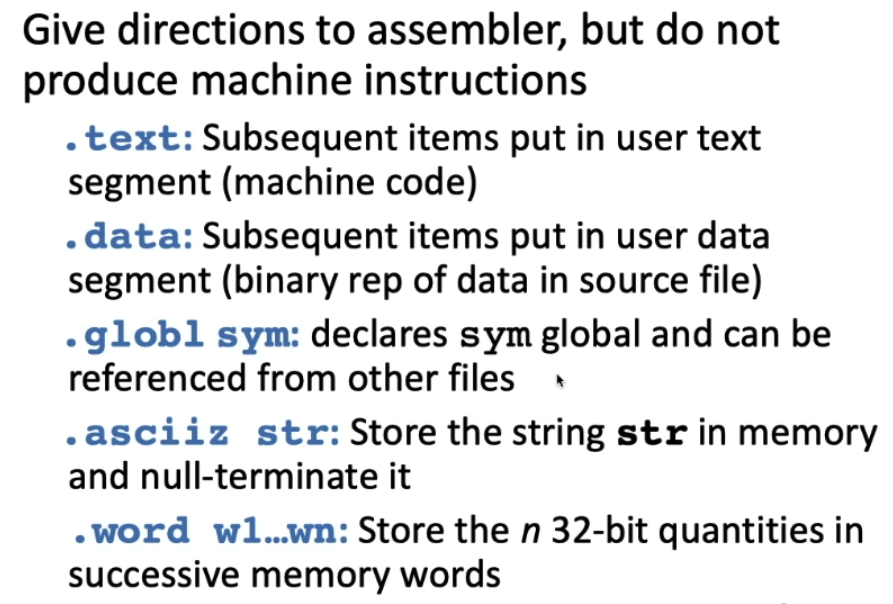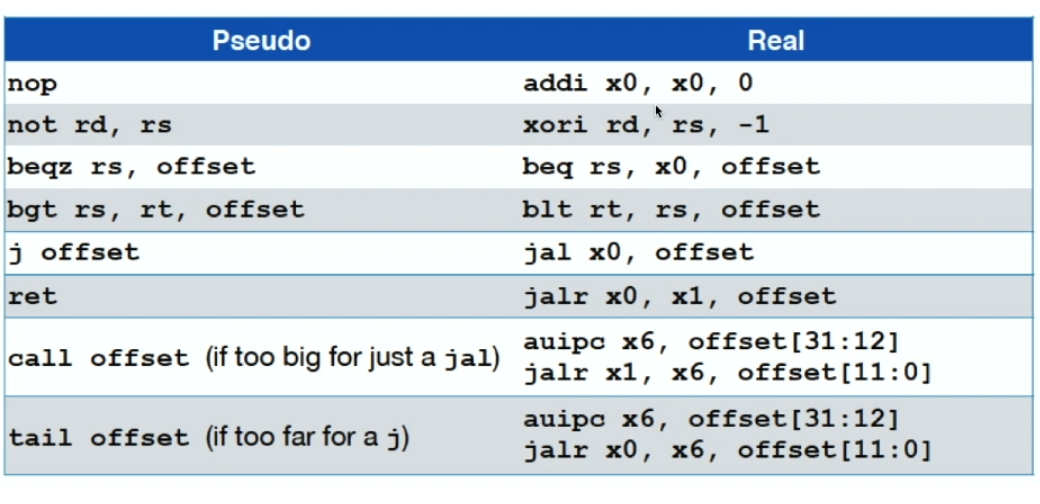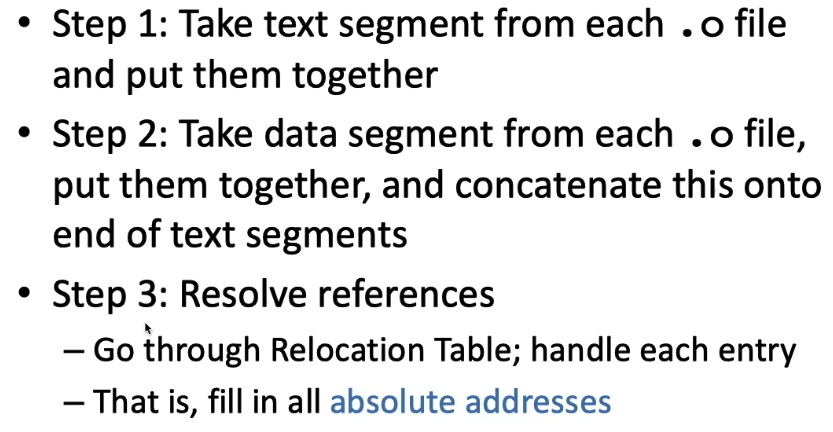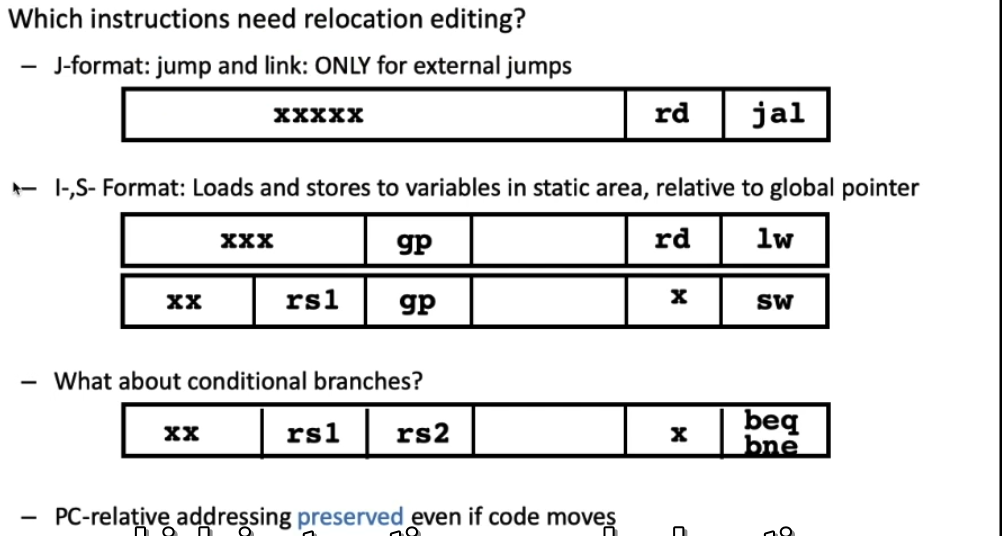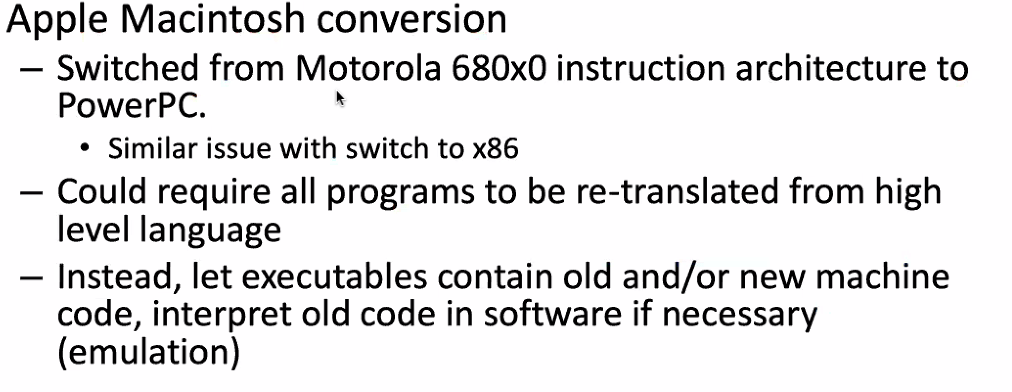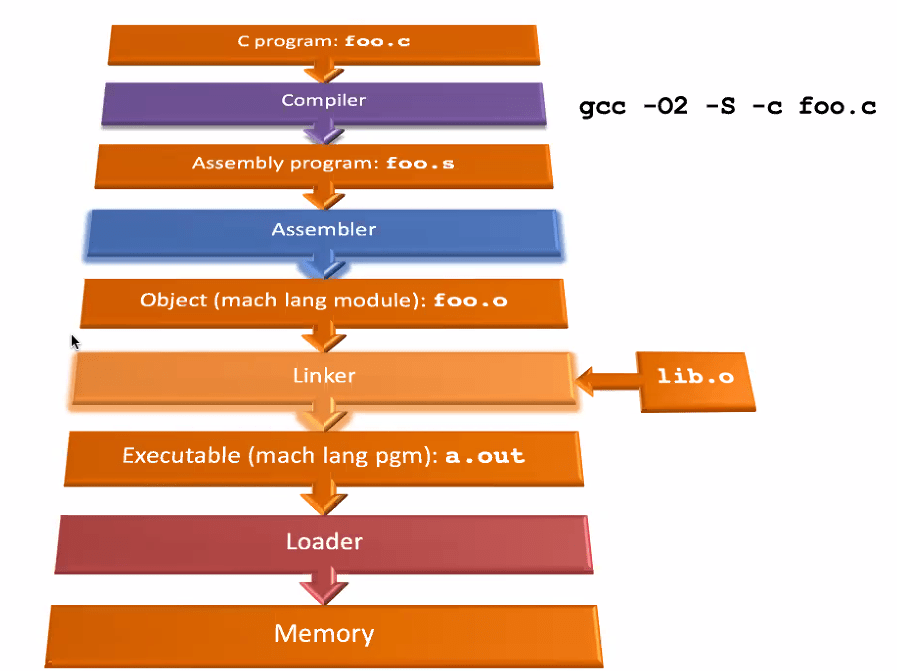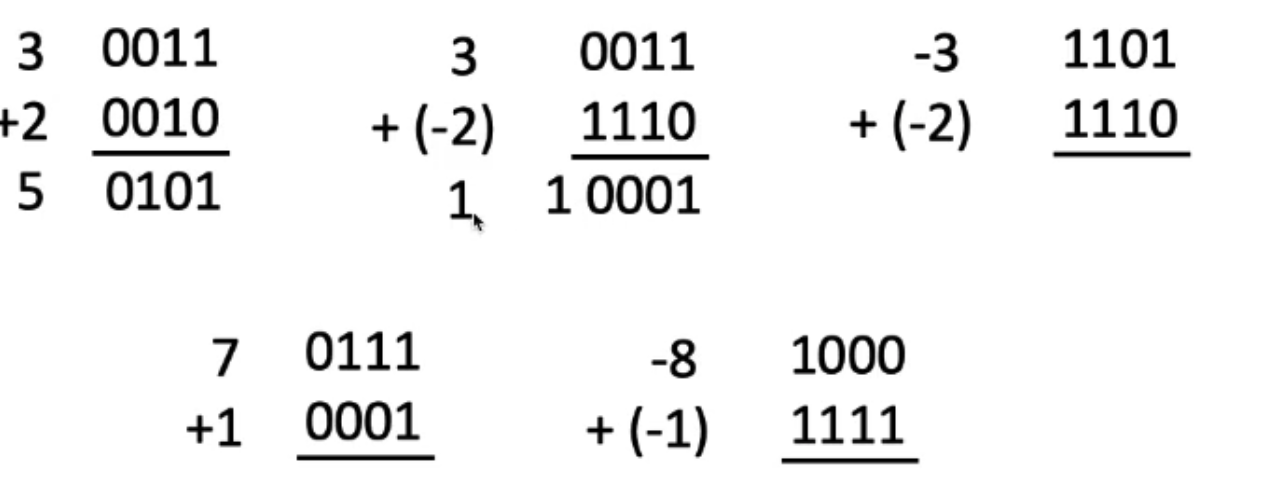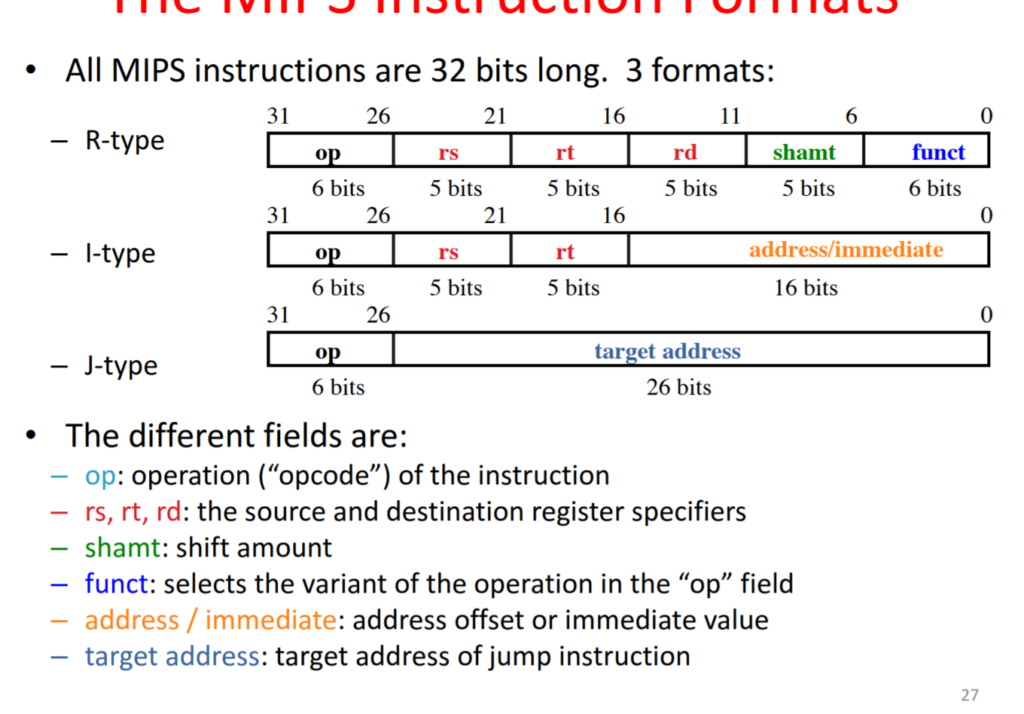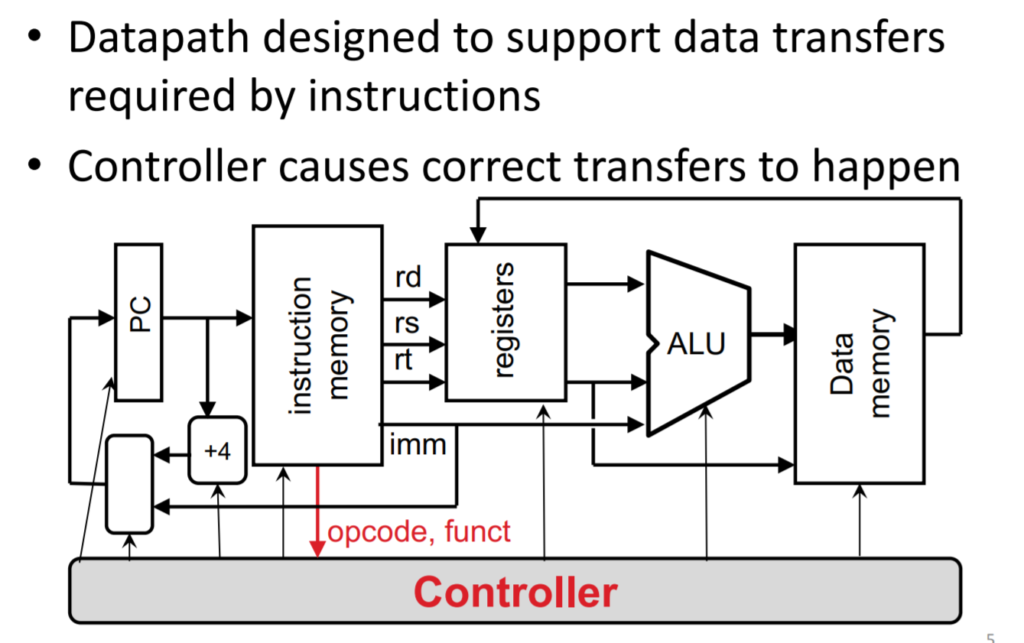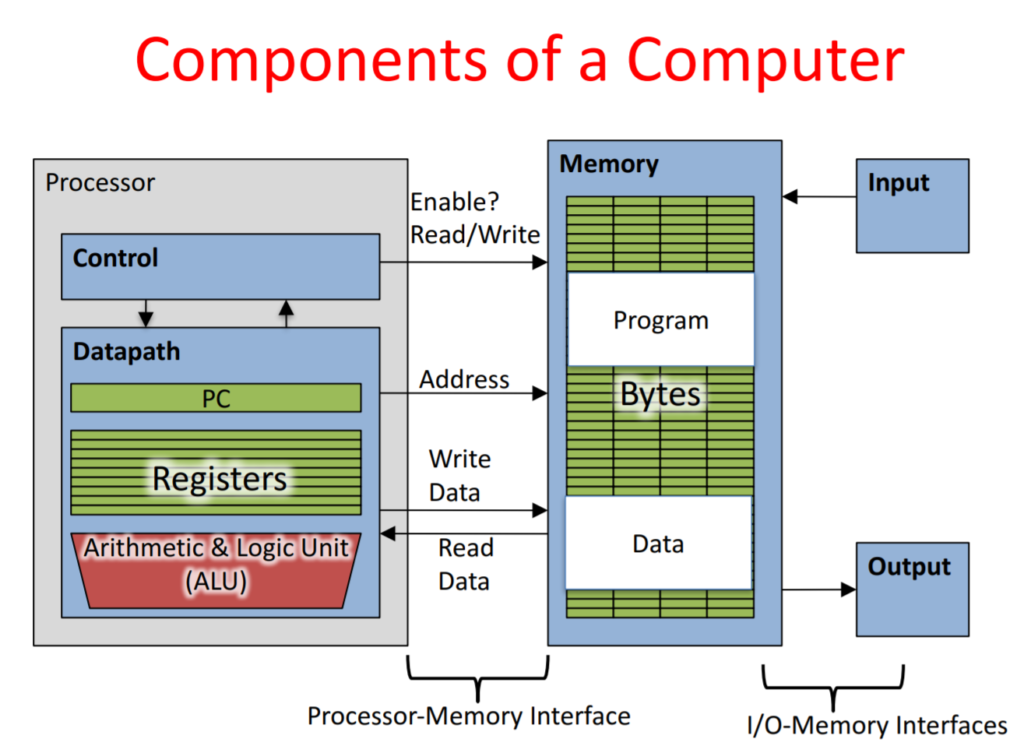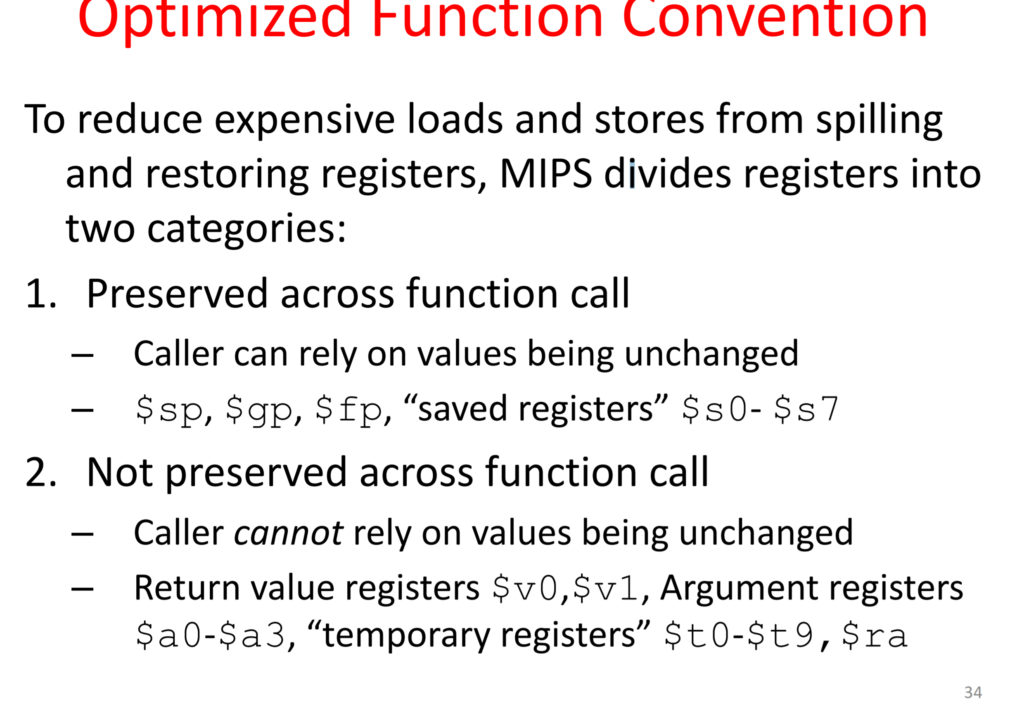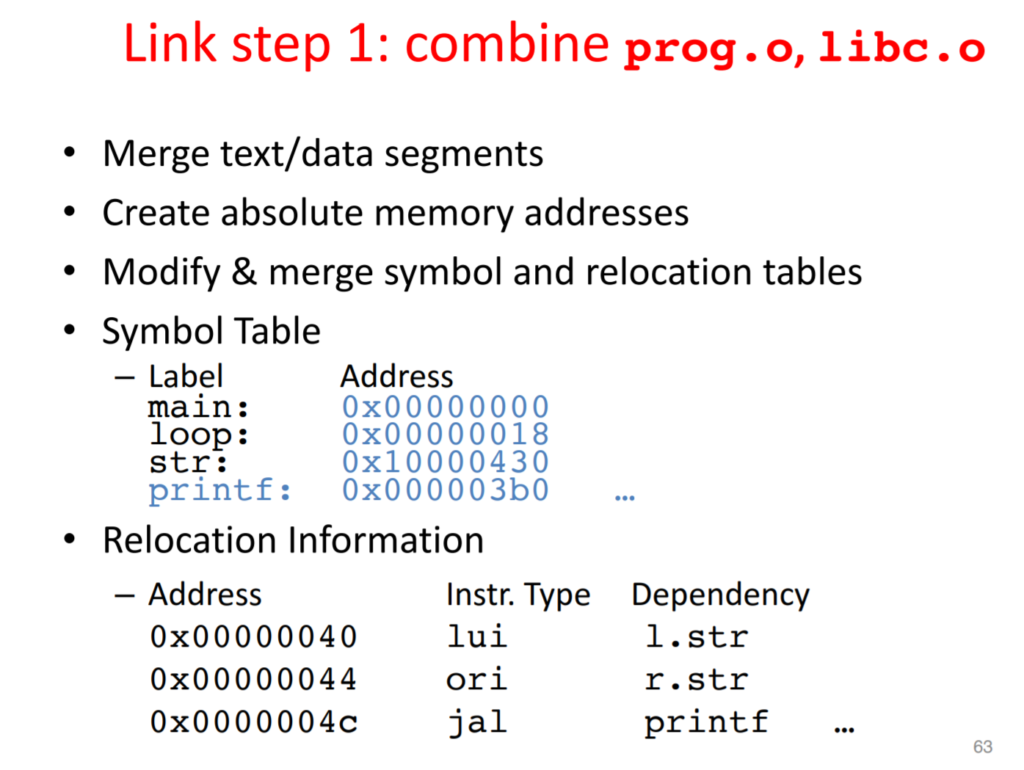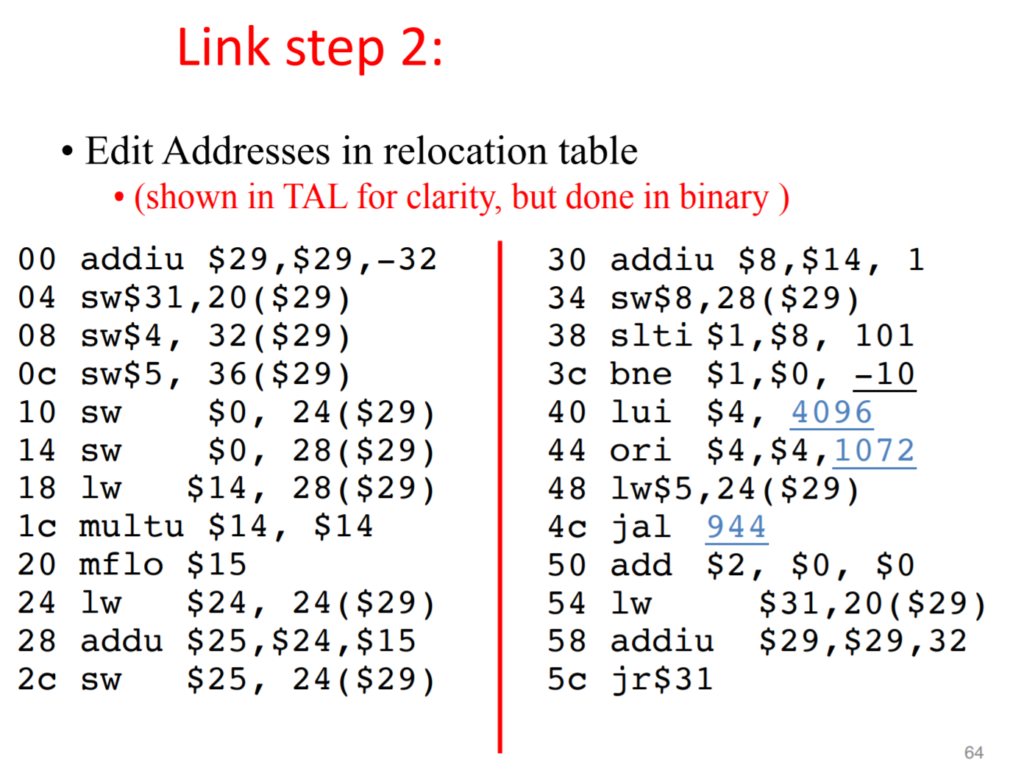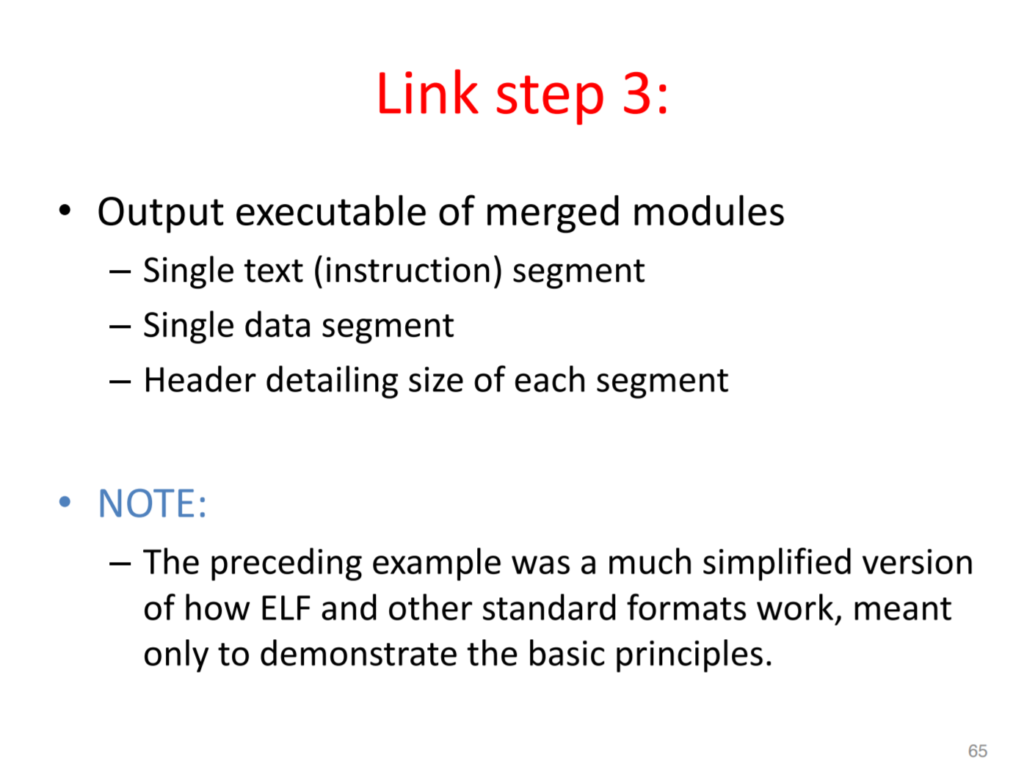intro - where are we now?
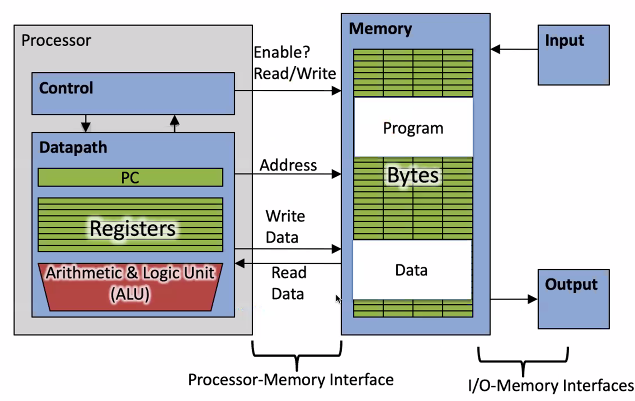
the cpu
Processor - datapath - control
cenario in RISC-V machine
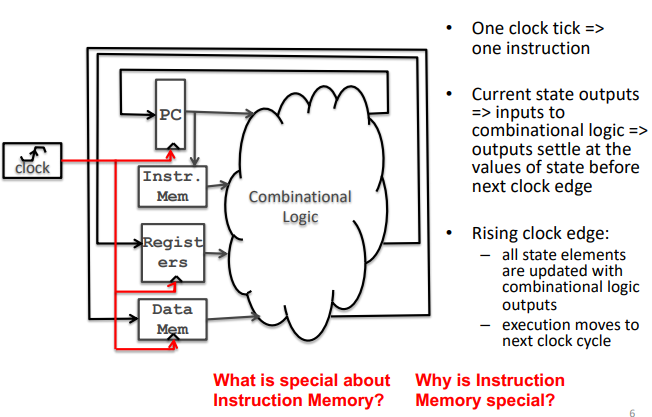
The datapath and control
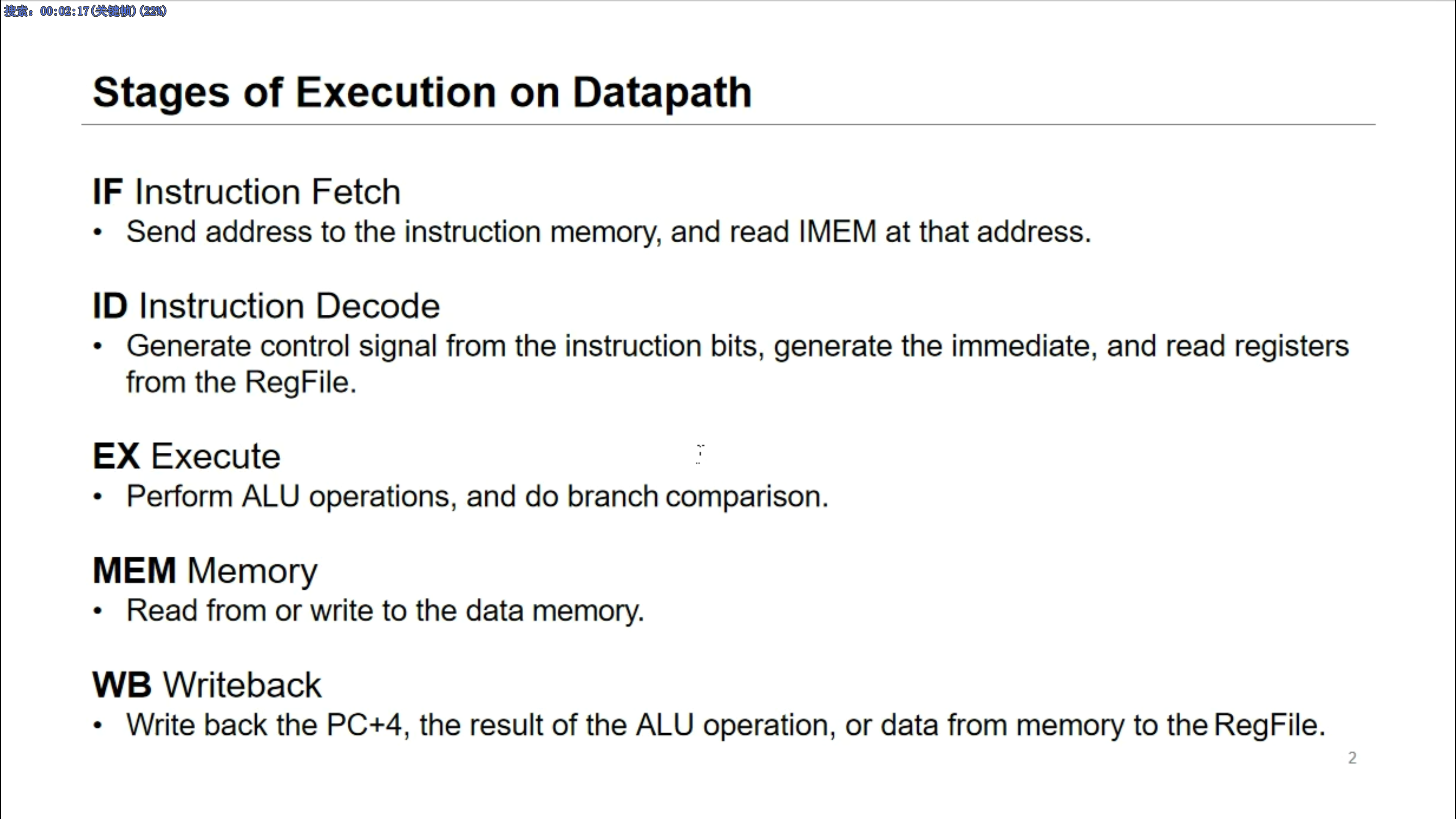

Overview
- problem: single monolithic bloc
- solution: break up the process of excuting an instruction into stages
- smaller stages are easier to design –
- easy to optimize &modularity
five stages

- Instruction Fetch
- pc+=4
- take full use of mem hierarchy
- Instruction Decode
- read the opcode to determine instruction type and field lengths
- second, (at the same time!) read in data from all necessary registers
- for add, read two registers
- for addi, read one register
- third, generate the immediates
- ALU
- the real work of most instructions is done here: arithmetic (+, -, *, /), shifting, logic (&, |)
- For instance, it's load and store
- lw t0, 40(t1)
- the address we are accessing in memory = the value in t1 PLUS the value 40
- so we do this addition in this stage
- Mem access
- Actually only the load and store instruction do anything during this stage.
- it's fast but unavoidable
- Register write
- write the result of some computation into a register.
- for stores and brances idle
misc


memory alignment

data path elements state and sequencing
register
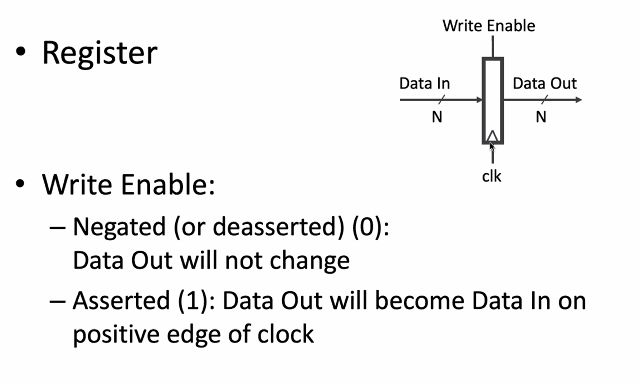
instruction level
add
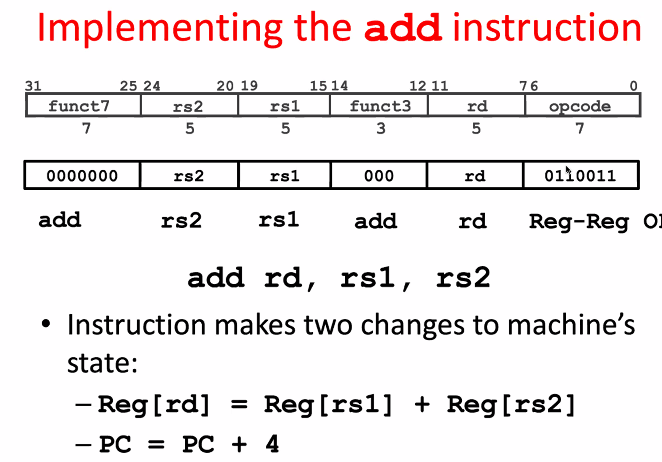
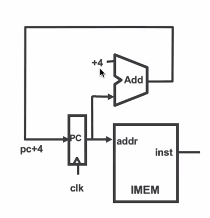

time diagram for add

addi
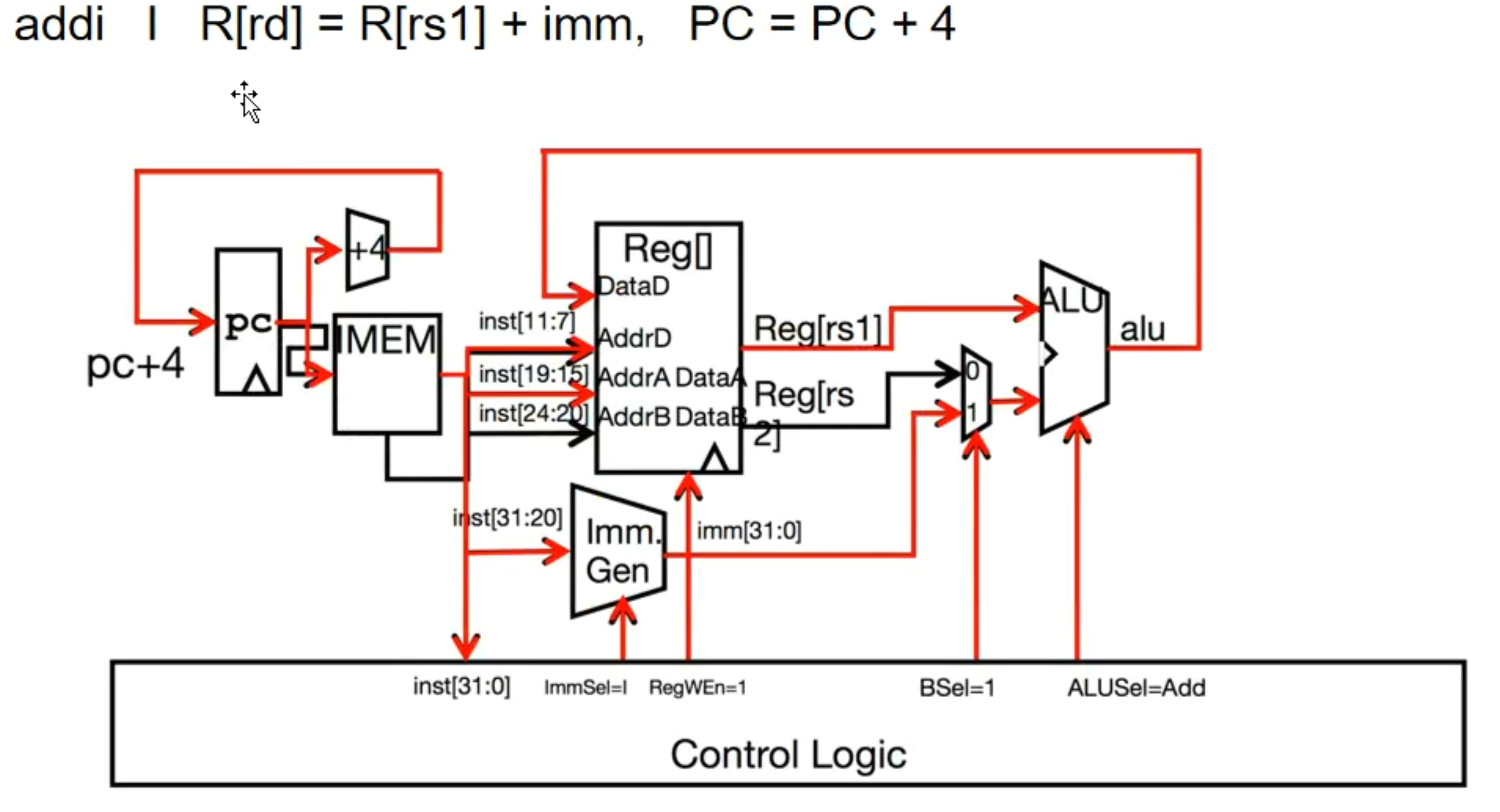
lw
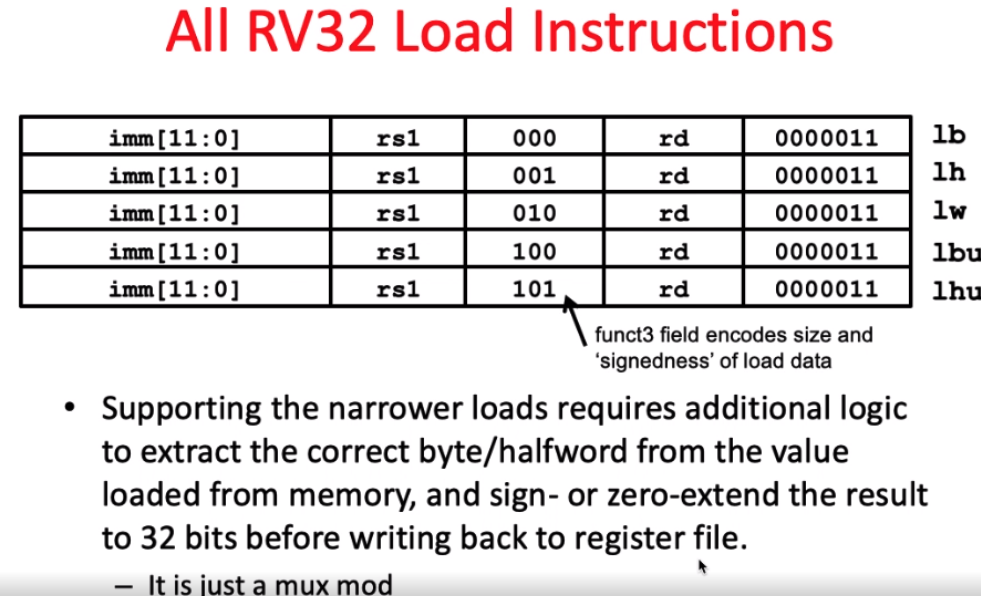

sw - critical path
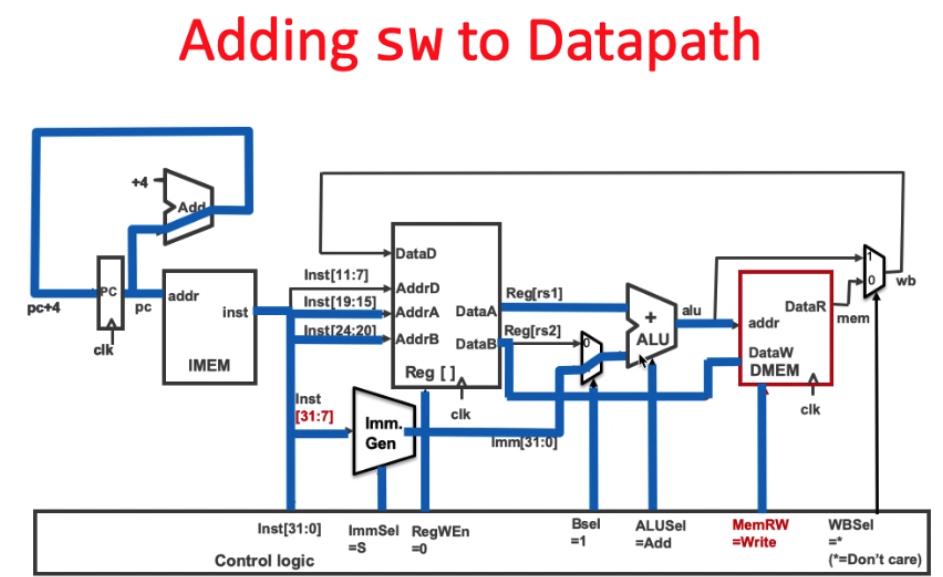
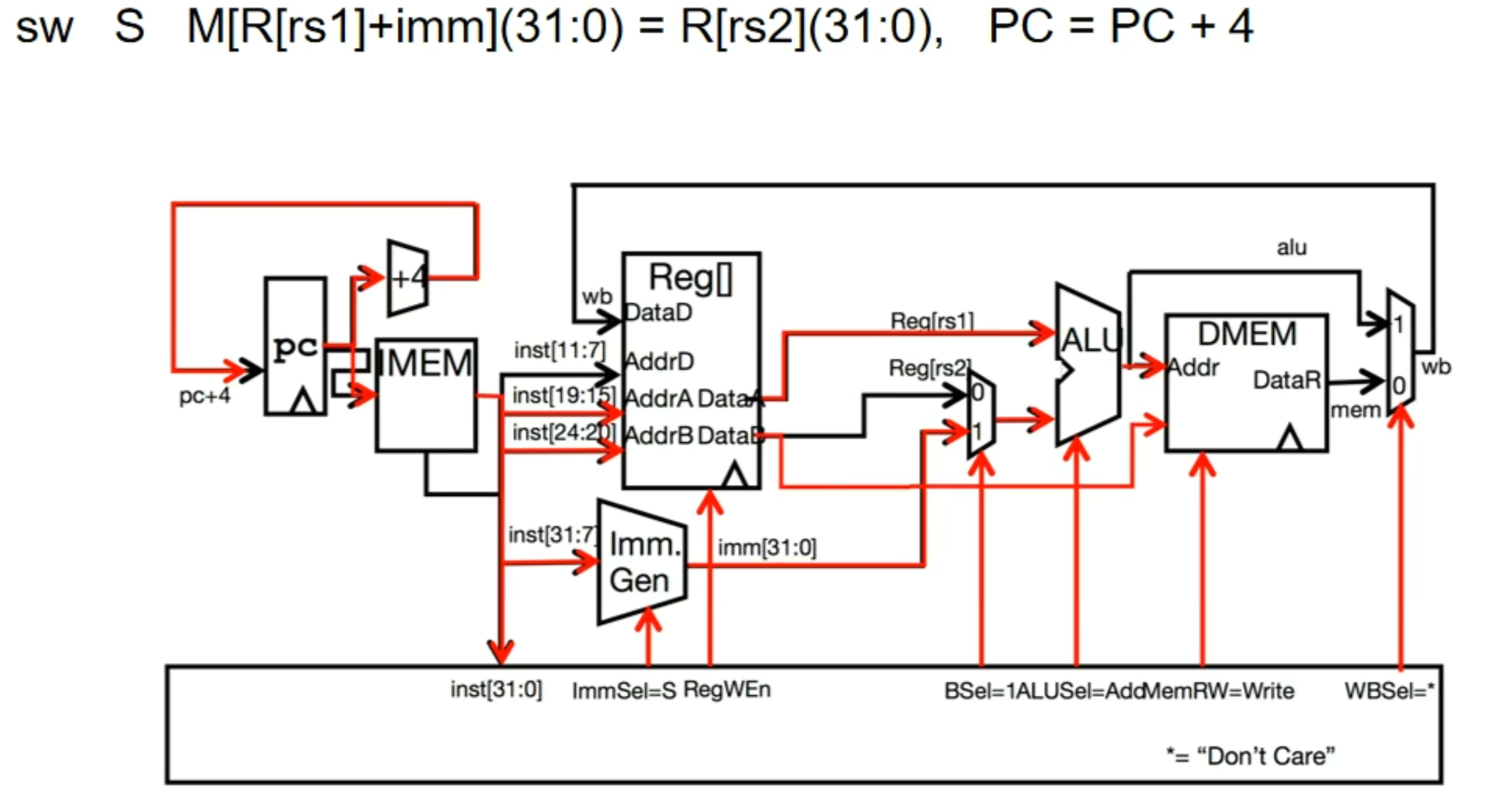
combined I+S Immediate generation

branches
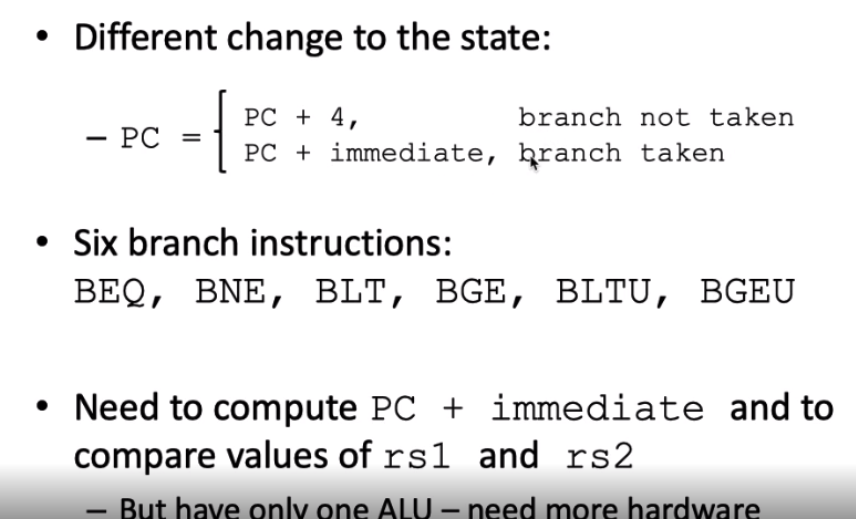
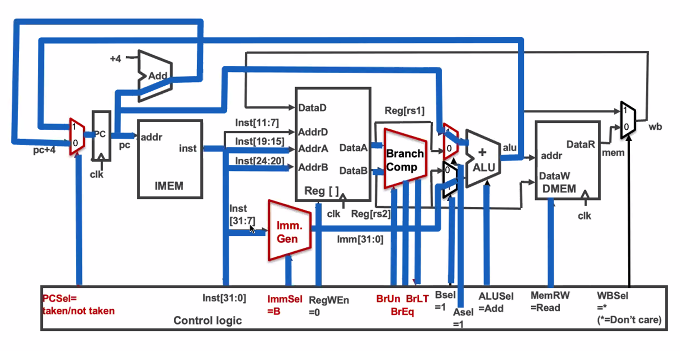
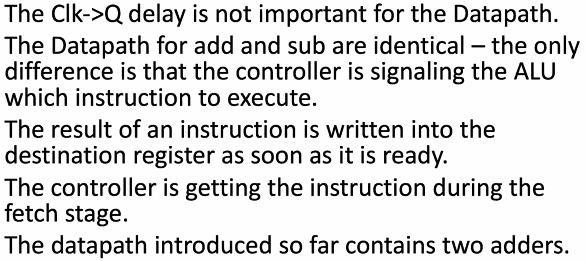
pipelining
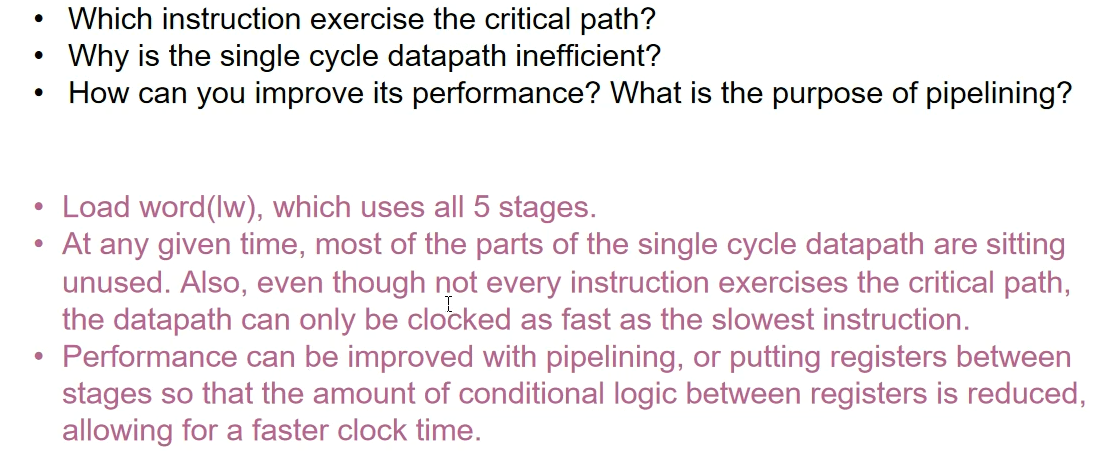
summary

quiz
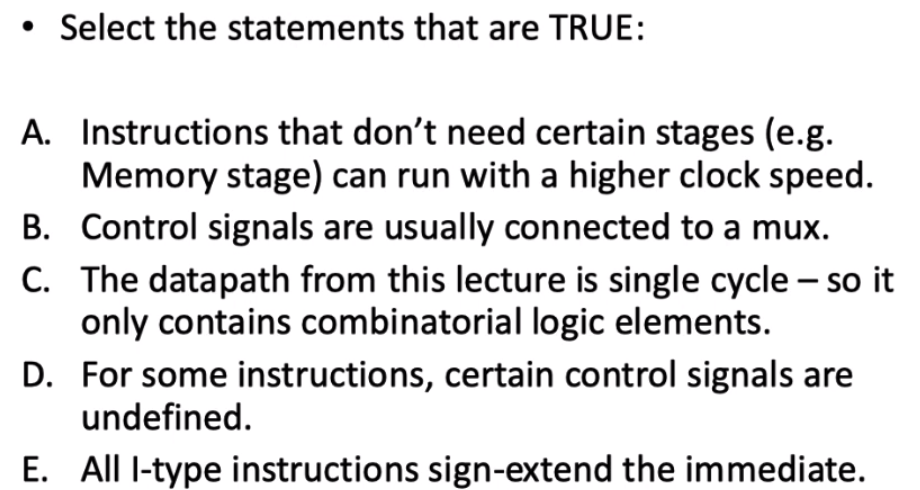
for D
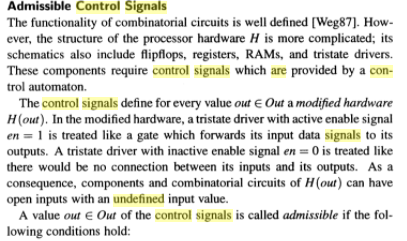


for E
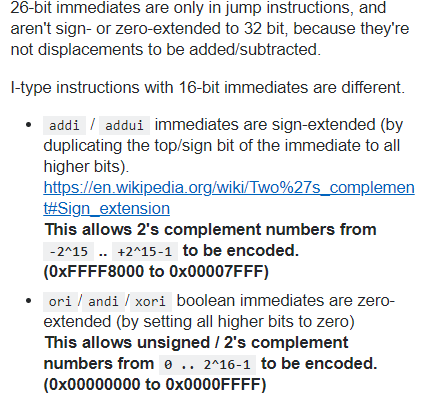


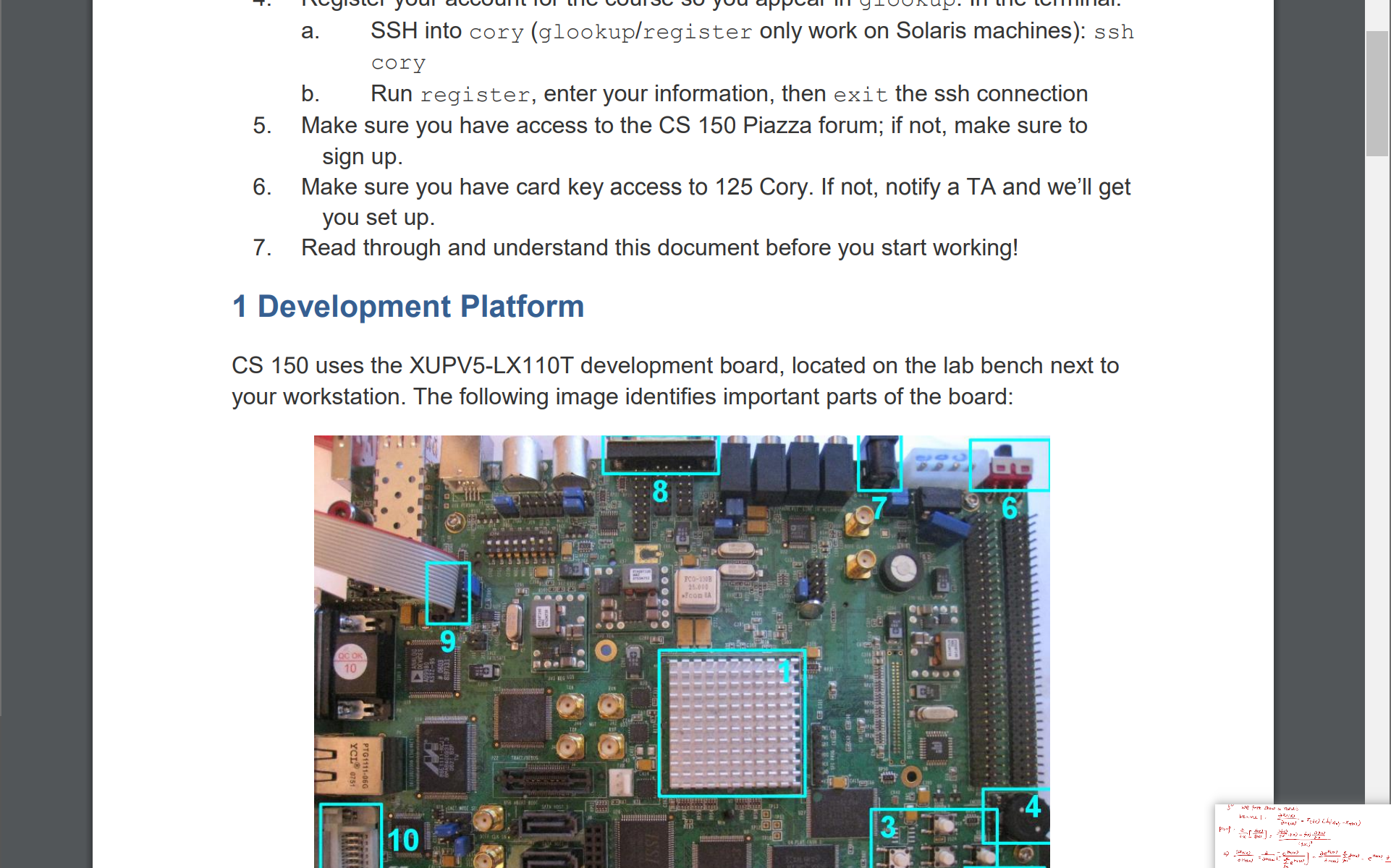


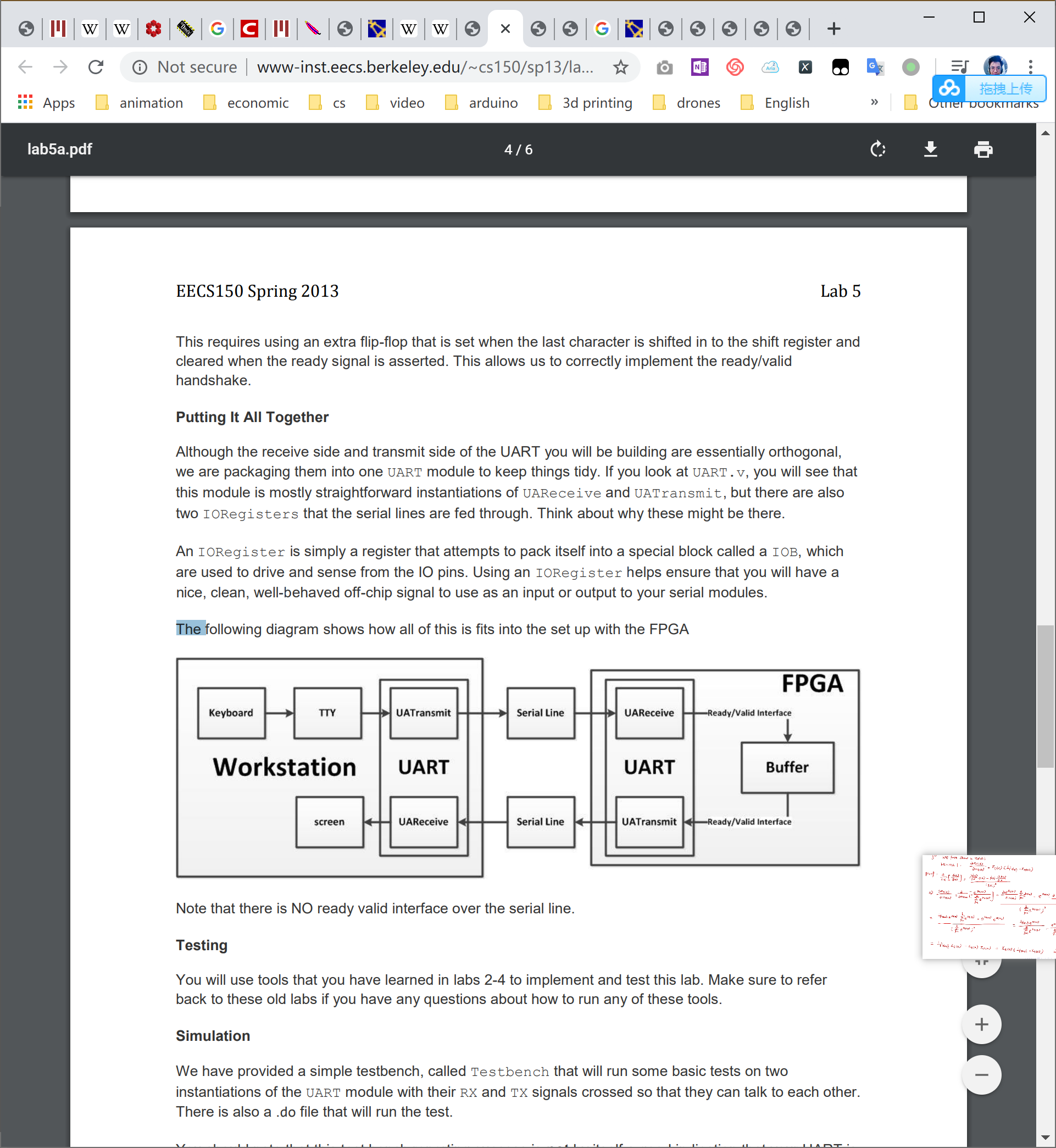



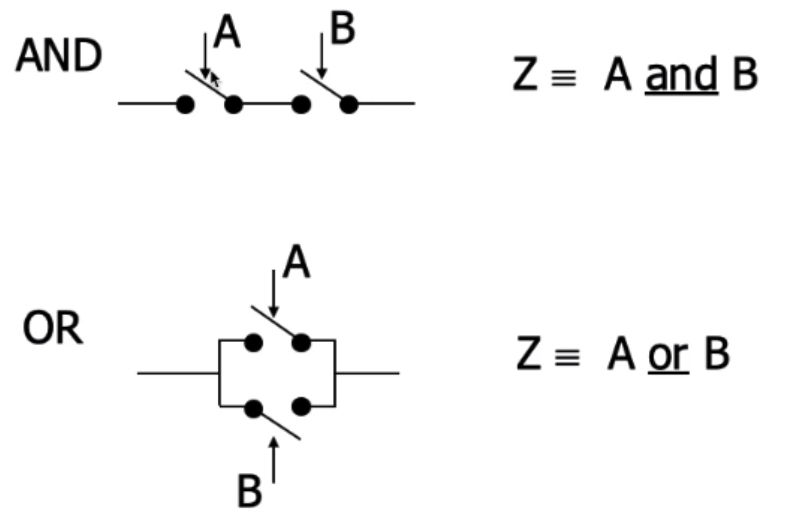

 vs
vs